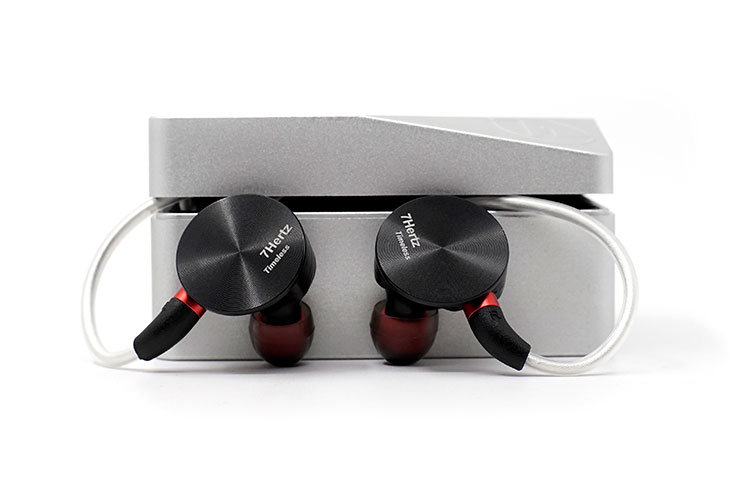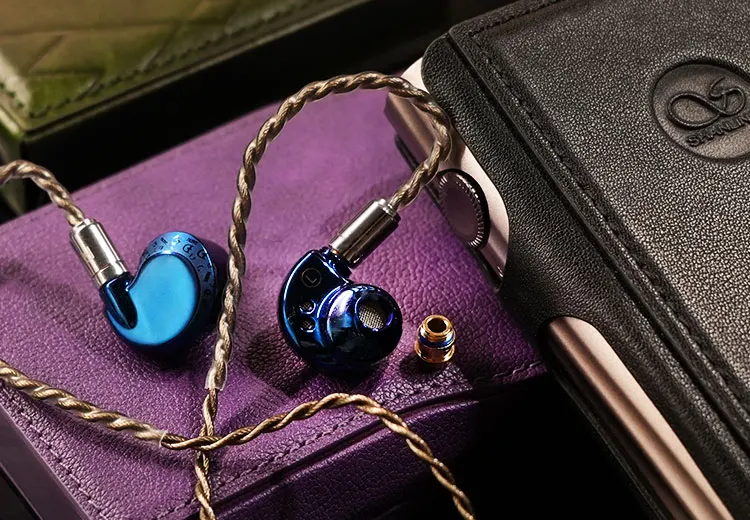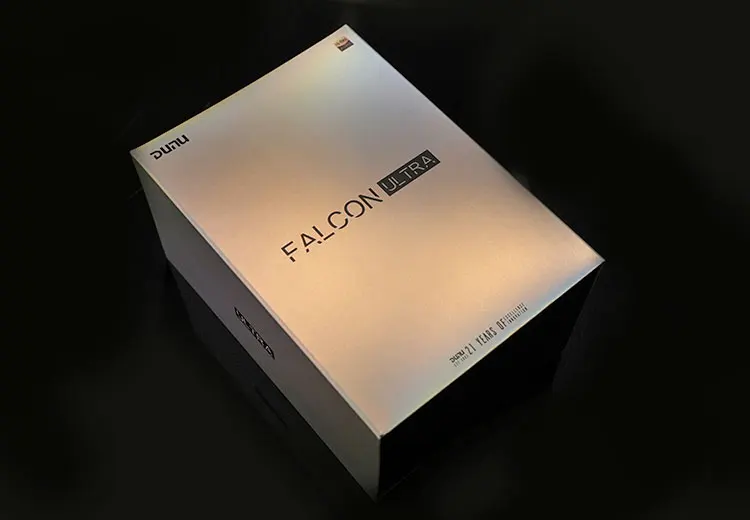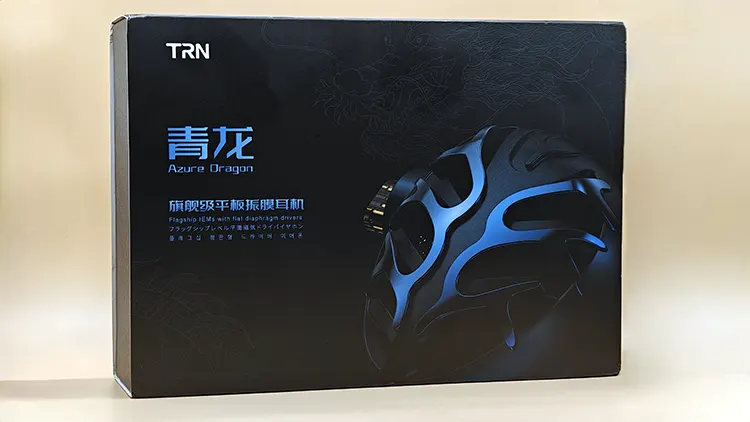Synergy
Efficiency
The TRN Azure Dragon’s impedance rating of 32Ω and a sensitivity of 108 dB/mW makes it fairly easy to run. Paired with my phone with a 3.5mm powered it with no issues.
I didn’t have an issue with it requiring more power. I also did not need to switch to its 4.4mm termination since the 3.5mm powers it fine.
The problem I had with this IEM is that it is extremely susceptible to noise and static. Plugging in any device that uses an ungrounded plug, I always hear some static or buzzing noise.
Using a different dongle, DAC, or device while it’s connected to the power outlet didn’t give me different results. I had to run the device through a battery-powered device to not get static.
I fixed this issue by buying a ground loop isolator. This was the most affordable option I could find that isn’t a standalone desk DAC.
Pairings
The TRN Azure Dragon isn’t that picky with sources. Using a phone with a basic 3.5mm, it powers it well with some leeway to increase it a bit more. I can put the volume at 75% to get sufficient power.
With the balanced Colorfly CDA-M2, I had to use a 90% volume when in SE output mode which is absurdly high but understandable due to the increased resistance.
The ground loop isolator removes any static so this 90% volume would sound the same if I was not using the ground loop isolator.
Select Comparisons
7Hz Timeless
Technical
The 7Hz Timeless uses a 14.2mm planar driver. It uses N52 magnets and a thin diaphragm for the structure.
It uses MMCX for its cables which I find stronger and more flexible than the regular 0.78mm 2-pin but is more difficult to attach and detach if you are not used to the ‘pinch’ process.
The 7Hz Timeless has 104 dB of sensitivity and 14.8Ω of impedance making it relatively easy to drive but not the most sensitive IEM on the market.
Design
The 7Hz Timeless has a full CNC aluminum chassis. It’s cold to the touch and has that textured feeling.
It has an all-black color design with the only other shades of color being white text and the golden MMCX terminations.
The design has a classy but understated business feel with the textured faceplate. There are also 3 vents on the upper side to remove unwanted ear pressure.
The fit on the TRN Azure Dragon is better, despite housing a larger 14.6mm planar driver. It’s less obtuse than the 7Hz Timeless and lacks noticeable hard edges when inserted into my ear canal.
Performance
The 7hz Timeless has a livelier and stronger bass presence when compared to the Azure Dragon. The TRN Azure Dragon is weaker but the resolution is on par. Both of these IEMs are not bass head level though even with the bass increase of the 7Hz Timeless low-end.
Their mids are both great with all vocal types clean and not too bright sounding. However, they do suffer from dry-sounding mids. They needed more warmth to make it sound livelier and less analytical.
The TRN Azure Dragon has a better and cleaner treble with more detail retrieval, less sibilance, and sparkle. There’s no unusual spiking of sibilance similar to how I hear the 7Hz Timeless.
Their soundstage and dynamics are similar as well. The depth is better handled on the 7Hz Timeless though. The airiness of the TRN Azure Dragon is significantly more noticeable sounding dreamier than the 7Hz Timeless.
DUNU Falcon Ultra
Technical
The DUNU Falcon Ultra uses a single 10.7mm dynamic driver IEM, larger than previous generation dynamic drivers from the same brand.
The dynamic driver is made out of a lithium-magnesium pure alloy material. They advertise this as an improved driver that gives better transients. The new structure uses a new independent soft suspension system. It improves overall sound quality.
Design
The DUNU Falcon Ultra’s design is upgraded from the previous DUNU Falcon Pro. It still follows the same design choice while improving on ergonomics.
There are two colors available. One is called Klein Blue finish while the other is a glossy mirror finish.
Both of these designs are beautiful. Getting any of them wouldn’t be an issue. The downside is that both designs are fingerprint magnets. I’d refrain from touching it a lot.
Performance
The DUNU Falcon Ultra easily does bass better. Aside from having a much better bass punch and rumble, the bass experience is also more detailed.
I could feel my ear reverberating with my bassy tracks using it. The TRN Azure Dragon couldn’t give me that experience.
Their mids aren’t that different. Their tonality is surprisingly similar even though the TRN Azure Dragon is a planar. If there is a difference it’s the DUNU Falcon Ultra’s enhanced warmth with more note weight and sounds less dry.
Vocals have more life and are more enjoyable in the DUNU Falcon Ultra. The TRN Azure Dragon sounds more analytical in comparison.
The treble is where the advantages of a planar driver appear with more detail retrieval in the TRN Azure Dragon allowing me to hear subtle cues in recordings with the TRN Azure Dragon. I never felt like I was missing out on my experience here.
Staging is wider and more immersive in the TRN Azure Dragon. The DUNU Falcon Ultra couldn’t compete in this aspect since it always felt lacking in this regard.
Our Verdict
The TRN Azure Dragon is quite a competent planar IEM with very few faults in its tuning. That being said, it is still arguably one of their best-performing IEMs to date with sufficient bass, correct mids, and an impressive treble performance.
It also has a great modular cable with all the plug sizes you will need. The carrying case is also user-friendly as well.
This is a planar IEM that aside from a few noted flaws, would be a fine compliment to the plethora of dynamic driver alternatives out there at this price point.
TRN Azure Dragon Technical Specifications
- Driver Type: 14.6mm planar driver
- Plug: Modular (2.5mm, 3.5mm, 4.4mm) 0.75mm termination
- Frequency Response: 7Hz – 40kHz
- Impedance: 32@1kHz
- Sensitivity: 108db/Vrms







